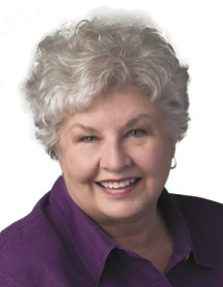
21 Apr 2017 An ancient tree that never dies
by Vivian Lawson Hogue
Have you ever known a group of siblings in which none of them looked alike? I have. It was my family. We all had blue or green eyes and brown or very dark brown hair, but there the similarities ended. I envied those who got the Arnold cleft chin and the full-bodied hair. The talents and mental traits weren’t distributed well, either. While we all shared creative abilities, we did not all have an aptitude for math. In fact, only one did not because as it came down to the last child, my parents seemed to be fresh out of math genes. I settled for a green thumb and a right brain. One begins to wonder where these traits begin.
I recently got myself into the matter of genealogy. And “getting into it” is what it is. It is like a Rubik’s cube on paper, or in my case, my computer, and it is difficult to stop playing the game.
My husband gave me an ancestry DNA test kit for Christmas. It was a gross matter that I had imagined differently. I thought I would simply dab the inside of my cheek with a cotton swab and mail it in a plastic bag. That was not the case, of course, and I was wishing I had observed the finesse with which my grandfather had spat tobacco juice into his empty Sir Walter Raleigh can.
One registers the kit, spits into a vial, shakes it to mix with some “secret formula,” puts it into a sealable pouch, then into a box, and mails it. It sounded simple, but I was dry-mouthed when finished. I then envisioned someone removing my revolting vial of spittle and holding it at arm’s length. It takes 6 to 8 weeks for them to return results, a reasonable amount of time to allow the technician to recover.
Meanwhile, I registered for a free two-week trial period during which I could form a family tree. I gathered family documents and am pleased that I have made it to my great-great-great grandparents. How so many people could live in Madisonville, Ky., Stokes County, N.C., or Halifax County, Va., and end up in the hills of Arkansas, I’ll never know. Actually, I do, as one reason was due to a legal pistol duel in which my ancestor won and he felt it best to take an extended westward vacation.
It is fascinating to watch the progression of these families. My maternal and paternal families began with men coming from England and Scotland in the 1600s and 1700s. They each met and married young ladies in Kentucky, Virginia and North Carolina and made their way to Tennessee, then northeast Arkansas. From what I have read, the hills and valleys reminded them of home.
I found there are 3,623,455 men listed in the U. S., Scotland and England with my great-great Granddad Lawson’s first, middle and last names, so he’s a needle in a haystack. I was also able to research my deceased second cousin, Maj. Maurice Kirby Gordon, who named the American Legion while in Paris after WWI. How could he be my cousin and be that old? That’s what happens when you’re the last kid born to post-Victorian parents in their mid-forties and your mom is the first cousin.
An online gravestone search of my maternal family plot revealed the nine children born to my Arnold grandparents. There were stones for two still-born babies; one for a one-month old; one for a 2-year-old; and one for a mid-30s adult who died on his wedding day. And people wondered why my grandmother suffered from depression.
So I’m waiting for my DNA test to come back and tell what percentage I am of other cultures or countries. Genealogy can answer some questions and bring others up. Like why my four brothers and my son could be recognized from afar by the same standing position.
I will never forget realizing that everyone is related to Noah. I could imagine his wife nagging about his determination to build his ark and how the neighbors were talking about him. “You’re just like your FATHER!” she might have said. Like that was a bad thing.
A native of Conway, Vivian Lawson Hogue graduated from the University of Central Arkansas with a degree in art education. A retired teacher, she worked in the Conway School District for 23 years. She is editor of the Faulkner County Historical Society’s semi-annual publication, “Faulkner Facts and Fiddlings.” She can be reached at vhogue@conwaycorp.net.












